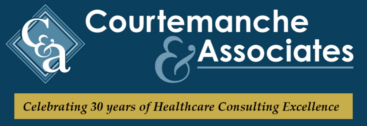It is timely that in the midst of a worldwide pandemic that has gripped our nation, we celebrate our nation’s nursing professionals during Nursing Week (May 6-12). The normal accolades provided to our nursing professionals for their delivery of safe and effective patient care seem to fall short in the face of the current healthcare challenge that has so dramatically changed the playing field in healthcare delivery. How appropriate the theme of this year’s celebration – Compassion, Expertise, Trust – speak to the strengths that our nation’s nurses are bringing to the bedside with the depth of challenge and change in nursing practice.
Almost 100 years ago, nursing faced a more sinister and deadly challenge, the Spanish Influenza Pandemic 1918-1919, where more than 50 million people worldwide perished. It was unlike any health crisis that the world had experienced in its time. It was especially catastrophic being on the heels of the first World War where the casualty numbers were a fraction compared with the pandemic. Nursing played a leading role in dealing with the pandemic as hospitals overflowed with victims. Doctors were helpless in treating the disease as they had never witnessed a disease with such rapid progression that patients would seem to be fine one minute and then the next they would be delirious with 106 degree fever with pneumonia overwhelming their victims who would drown in their own secretions. Society was on the brink. Nurses provided supportive care (hydration, pain control, nutrition) given there was no actual treatment of the disease itself. They also managed the challenges with the environment of care, staffing and infection control practices, to limit the spread to other patients and staff.
Mary Elizabeth Shellabarger, a Colorado nurse who served in WWI, was Assistant Chief Nurse at Northeast Fever Hospital in London during the pandemic. Her biography, Three Scuffed Suitcases, provides some first-hand insight into the contributions that nurses made in dealing with the Influenza Pandemic through her diary entries:
“1918 “September 24th: Last night we admitted two wards full of influenza cases from the States, so terribly sick. The first time I’ve done enough work to make my circulation actually start since coming to London. Interviewed Colonel Anderson this am on Infectious Precautions, and before night had orders for masks to be worn by all nurses and attendants in the influenza wards. Those terribly sick boys first landed from America on the same steamer we came on, some twenty weeks ago. I hope the whole hospital will not get Influenza from lax precautions in isolation of the cases.
1918 “September 30th: Only one death the night shift . . . Windows were all opened, wire masks were provided for the attendants and all attendants ordered to get into fresh air five minutes every 3 hours. Gave opiate for pain and stir only when awake.
1918 “October 3rd: Walked miles to cover ground after 127 patients were admitted. So many sick nurses too . . . So many nurses sick with Spanish Influenza we hardly have enough to keep the wards going. My voice is gone but I can now stay with my work because the chills and fevers I had the first of the week have disappeared. I can’t keep my vow to myself to go to bed when ill – there are too many off at present”
Mary’s efforts and those of her nursing colleagues around the world demonstrated the importance of nursing, especially when confronted with an unstoppable calamity that can quickly overwhelm healthcare resources. We must ask ourselves is what did they learn and were they able to improve on nursing practice in preparation for future pandemics? What research was done during and immediately after the Spanish Flu to affect nursing practice? Unfortunately, nursing research has only emerged as a systematic study and assessment of nursing issues in the last 50 years. Consequently, obtaining lessons learned from bedside nurses is mostly tapped from diaries and journals like Mary Shellabarger kept although the information is often limited.
So, what are we doing now as nursing professionals with this current crisis? Are we thinking how we can improve on our nursing practice while we deal with shortages of staff and personal protective equipment? As leaders, are we capturing information from our frontline staff, analyzing it and sharing it? What can we do to better prepare ourselves or our posterity for the next pandemic, even while dealing with the current one? What changes are we anticipating with regards to infection control practices? Are we positioned to affect these changes?
Take time during Nurses Week to remember our colleagues from 1918-1919 and the challenges and sacrifices they made during their pandemic. Take pride in the tradition of patient-centered care that our profession is renowned for and the trust we have earned from our communities for our practice excellence. Commit yourself to improving our practice during these times of great challenge and the changes that may come. Above all, take care of yourself and celebrate the great care you provide to your patients.
iBarry JM. The great influenza: the epic story of the deadliest plague in history. New York: Penguin; 2004.
iiJames F. Armstrong. “Philadelphia, nurses, and the Spanish influenza pandemic of 1918,” Navy Medicine, March-April 2001: 16-20.
iiiStephenson AS. Three scuffed suitcases: biography from the diaries Of Mary Elizabeth “Bess” Shellabarger Colorado World War I Nurse. California: CreateSpace Independent Publishing Platform; 2015.
